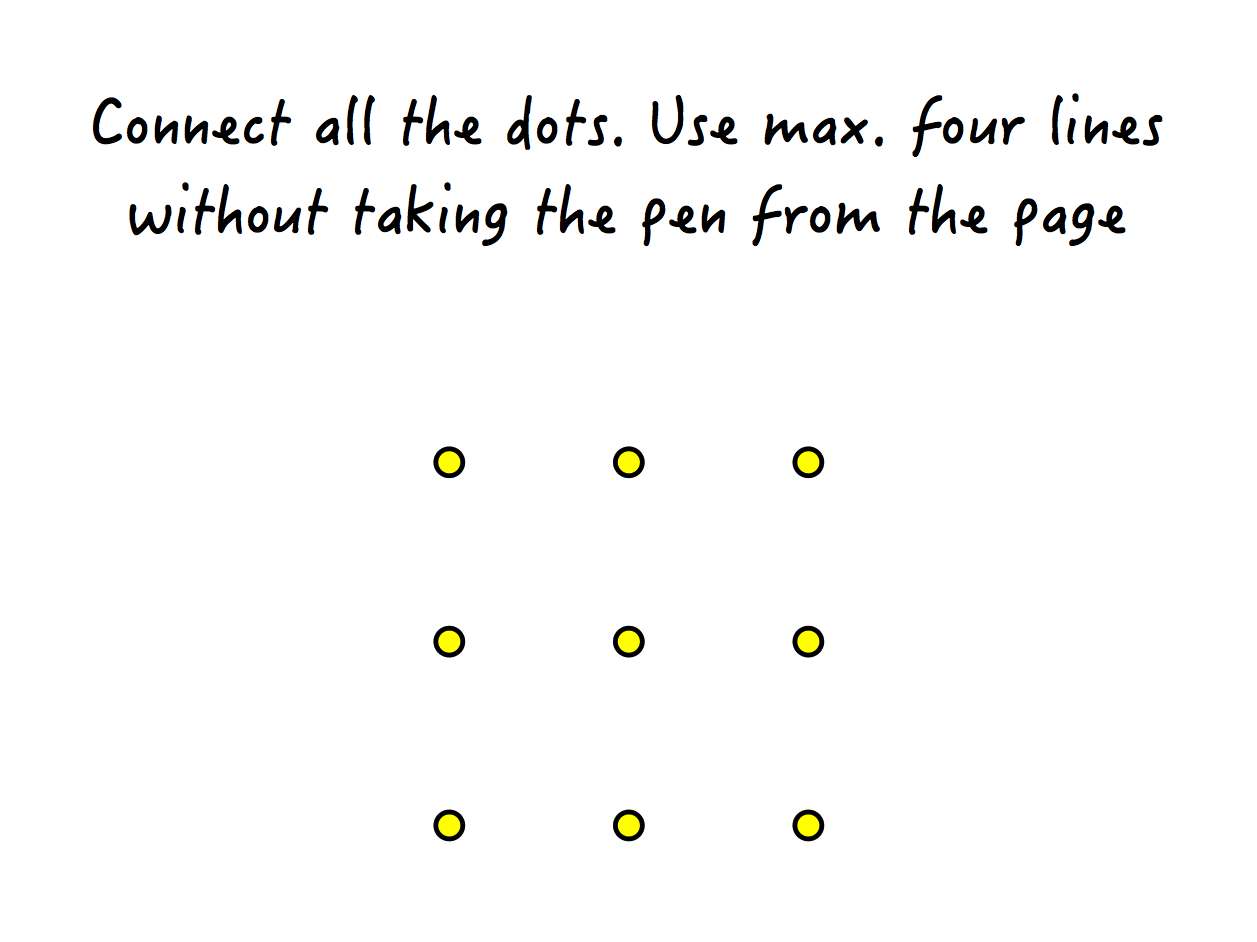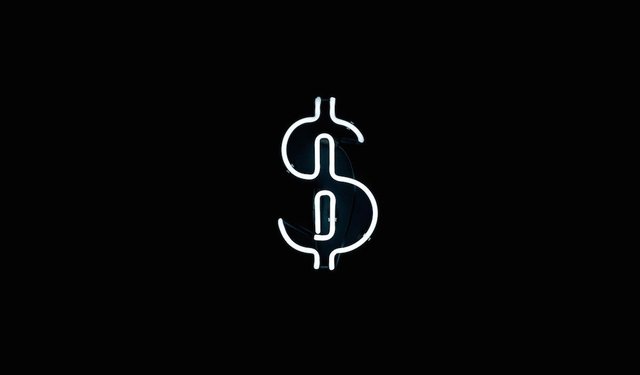Would you like to make 100 Grand? Sure?

solve this riddle - it is going to play a role here.
Sorry, I lured you in with a message that might be a little mean. You should still read to the end. Don't let yourself be irritated. You'll connect the dots in the end.
In my training as a systemic consultant, there was one participant with whom I didn't get along very well and who I found extremely difficult. This was based on reciprocity.

What happened to the innocent chair? The expert opinion tells me quite clearly that the chair is simply a chair and my occupation would have no effect on it. But of course this was not the case at all in the eyes of the classmate - and as a consequence in mine, neither.
The chair was immediately given a symbolic meaning. If she had allowed me to use it, it would have been extremely unpleasant (perhaps even impossible) for her to take a seat there again, without difficulty. The chair was given the unpleasant feelings she had with me. The chair would have become a symbol of our incompatibility.
This short excursion into the time of my training shows the power that the use of symbols can have. I explained in my last article that man is capable of all kinds of mental constructions. Today I would like to talk about a special method of Constructivist constellation work:
Working with floor anchors.
As outlined in this posting, the constructivist form of constellation work differs from the phenomenological form, because no real persons are used as substitutes for a situation, but rather symbols.

Chairs are even particularly suitable as symbol carriers.
But you can also use stones, shells, stuffed animals, dolls and wooden figures. I mainly work with moderation cards, to which the symbol is then transferred. This can also be a color or an odour. All these things then act as ground anchors. Why do they do this in systemic consulting work?
Any ideas?
The advantage of working with such ground anchors is on the one hand the unusual proceeding and thus is very suitable as a pattern breaker. Usually you are used to being together in a conversation without using any tools. Furthermore, it is much more difficult to structure a conversation in such a way that a method finds support in it. Staying on an abstract level alone has less effectiveness than including the use of symbols.
So what is the procedure for this method?

For the sake of completeness, I will not start with point 4, but name before all the aspects of consultancy work in general:
- clarification of the order (what does the client want?)
- choice of the level at which work is carried out (in this case the constructivist level)
- selection of the elements necessary for the work (here: "goal", "obstacle", "focus")
- assembly
- create final image
- anchor the final image with the client
- transfer to everyday life
- release the client appropriately
Further advantage of this cooperation is the slowdown - inner images become visible on the outside. Unclear thoughts, diffuse fears turn out to be bearable in processing:
"It's not as bad as you think. It's just as bad as you think."
Humility, gratitude and curiosity are advantageous for this constellation work. The operator acts as a host so that the client can discover himself/herself.
What else can this form of constellation do?
Constellation work can place the system in a larger frame. This can only happen if something has already been set up.
Where there's nothing, there can't be a frame, can there?
It offers the possibility to think beyond your own system. Just like the little task I set at the beginning. Have you already solved it? It has to do with "larger thinking" or "stretching imagination".
What is the meaning of the words "goal, focus and obstacle"?
For example, the client has commissioned him to aim for an annual income of EUR 100,000 in three years' time. However, he does not know how to achieve this goal and therefore wants advice. Since the method is chosen, the target income is the client's "goal". However, the "focus" is not, as one might erroneously believe, a thing to concentrate on. The "focus" in this case is the client itself.

What stands between the "now" (the focus) and the "elsewhere" (the goal) is the third element: the "obstacle". On the whole, this is also known as a "condensed constellation".
In fact, however, the danger of getting stuck in the system and being limited by it with the constructivist approach is somewhat greater than with the phenomenological approach. It requires skill on the part of the consultant to allow oneself to look beyond one's own nose. The consultant should not attach too much value to the client's attributions, i. e. what the client finds better or worse in the choice of ground anchors, etc., should not be overestimated.
When you are a beginner, you make mistakes.I once had a client who, just as soon as we had defined the goal and the resources, started distracting me in such a way and also didn't move from the spot - i. e. sitting dull on his chair - that the whole method went down the drain and I postponed the work to a later session. I don't think I did a good job of tapping on if the intention of will was indeed strongly present. Such mistakes are important so that I know what I should do differently next time and become aware of which of the individual points I have my own weaknesses. The times when I started to sweat because I missed something or used it wrongly are fortunately over, and sometimes I am even able to laugh about it or make fun of it myself. Best thing is to admit it openly.
"I would like to make 100 Grand"

Back to the topic. There are a number of things to consider in this form:
1. There is no problem without "focus":
If no one else sees the problem, is it there?
If I work on a goal, which is not mine at all, I can't solve the problem! I'm not the focus, then.
--> note the focus.
2. There is no problem without "direction/destination":
if I'm dependent on someone else taking another step, I'm programming in my failure. This stabilizes my problem
--> write down the target.
3. No problem without "obstacles":
and: no obstacle, which is not already a hidden resource (e. g. too little income to be able to afford something - hidden profit: manageable concept of life).
If there is an insurmountable obstacle, then the focus or target is probably wrongly defined. Obstacles can therefore have a protective function.
--> note three obstacles.
4. Considering something as a problem means that I've already (unconsciously) accepted that I haven't exhausted all resources yet.
--> record three unused resources
5. No problem without hidden profit:
Possibly the quality of life would be reduced by solving the problem. The hidden profit demands that I take care of it, that I cultivated it beforehand (for example, "I always get so badly out of bed because I am stoned so much").
In that case, as a consultant, I can ask, "What's the real advantage for you if you don't solve the problem?"
But be careful: you must not put the gain of the obstacle in relation to the goal. That would override it. Rather, the obstacle wants to be integrated and the client wants to reach his goal by other means. So you don't push the hidden profit (the obstacle) aside, but rather make friends with it.
6. After each problem solving there is a new task
--> note down the future task
To give you a better picture, I will do now the steps into the scenario & use moderation cards. Imagine the client and me in a room which shouldn't be to small so that we can easily move and use the full space.
My client has already committed himself to the method. We now are standing in the room and I ask him to tell me the goal. He says "I want to make hundred thousand Euro per year within the next three years". I ask him to write that down on a moderation-card. He uses the thick black pen and writes "100.000" on it. I ask him to place the card on the ground where ever he finds it should be put. "goal" is set. As we agreed before on the fact that indeed he himself has this goal (not his girlfriend nor his parents) also the "focus" is set. He writes his own name on the card. Now I ask him: "Where do you want to put it?"
He ponders for a while and decides to lay the card on the ground about three and a half meters from his destination. I'll tell him there's a mental timeline running down here now. Then I want to know from him what resources could accompany him on the way to his goal. I stand a little to the side of him, neither too far away, nor too close to him. I ask him what it might be, which could typically support his intention. I ask him to name three things. He calls two resources quite quickly and says:"willingness to take risks" and "enthusiasm". Body posture and expression (gesture, facial expression) underline what he says. I ask him,"What's your third resource?" He needs to think a little bit. After all, he says,"I'm not sure. But my girlfriend says I'm very reliable. Is that considered a resource?" I ask him:"Is this statement familiar to you? Do other people say the same thing about you?" He:"now that you're asking for it..." Yes, they say, my colleagues anyway." "Very good, that's what counts." I'll ask again,"Are all three cards correct?" The client affirms this. I say,"Please put these cards where you think they will help you on the way to your goal."
It is important that the body language is observed by me and that I give feedback about my impressions and ask whether this is the case. When the cards are finally laid down, I ask once again whether it feels right.
Placing the cards next to or behind you is not uncommon, for example, because they "strengthen your back" or "accompany you like friends".
The same we do now with the obstacles. Three should be named.
My client says "impatience", "laziness" and "insecurity".
He places the cards in such a way that they partly block his path. At this point we stay for a while and I ask about the hidden gain of the respective obstacles until we are ready to consider the strengths in the obstacles as profitable and integrate them into the further path to the goal. If necessary, we connect them to the existing resources.
It has become clear that the client's previous concept of life - living on a rather small footprint - was actually no longer felt so bad and the intention to earn more money in the next few years is a decision for a family he wants to found with his girlfriend. Up to now he had always thought that his existence was regarded as rather unattractive (mostly by himself), but now he can accept the great advantages of his way of life.
This is how a session could look like - in fast motion.
What becomes clear in this form of procedure?
People may not suffer as much from their perceived problems as they think they do. So far, however, they have not been aware that this is the case.
It is also true that the solution I find today can create the next "problem" tomorrow.
For example, if I have reached my income target, this means that I have to take care of a lot more things that I did not need to do before (searching for a tax advisor, managing the money, suddenly being considered liquid with friends, looking for a bigger apartment etc. etc.).
Superordinate to the whole, there is a so-called smart rule:
The objectives must be determined by:
- can it be reached independently?
- does it have a time frame?
- is it suitable for everyday use?
- is the intention of will present?
So if you see a problem with yourself, you could ask for these things without necessarily going to a systemic consultation. What you may notice is that what you have identified as a problem is less serious than you thought it would be, and your perceived burden will decrease.
Have fun with the examination!
Thank you very much for reading.
Text sources:
- University of Cologne - systemic constellations: http://methodenpool.uni-koeln.de/systemaufstellung/darstellung.html (German)
- Systemic constellation techniques: http://www.claro-vita.net/pdf/texte/Sabine_OttoAufstellungstechniken.pdf (German)
- Basics of systemic constellation - concepts, basic concepts and principles Karl Wimmer: http://www.wimmer-partner.at/pdf.dateien/syst.aufstellung.pdf (German)
- System constellations - overview of sources, development, procedures, types of constellations and principles: http://www.schulzebremer.de/download/files/systemaufstellungen---u0308berblick-u0308ber-aufstellungsarten.pdf (German)
Picture sources:
riddle: my own creation
1. Photo by Milada Vigerova on Unsplash
2. Photo by Lionel Gustave on Unsplash
3. Photo by Marra Sherrier on Unsplash
4. Photo by Nadine Shaabana on Unsplash
5. Photo by Jimi Filipovski on Unsplash
The lines don't need to stay within the box created by the dots, if you extend the lines past the dots and then apex it back you will be able to join them in 4 lines:)
exactly! Thank you, @zest.
Did you already knew it or solved it for the first time?
It was part of a test I did at 14:)
Nimm einfach 3 Linien und gut is...da steht ja maximal 4 :D
Leider falsch:-) - wenn ich es schaffe, dann gebe ich heute oder morgen die Auflösung.
Danke fürs Mitmachen.
:-)
Common, you haven't even tried! :)
I am filling my alcohol reservoirs atm. Tomorrow
Bon apetit!
Tip: The lines don't stop and end of the box created by the dots:)
Therefore the saying "think outside of the box" :)
This is a very interestingly written post! The beginning really gets one's attention!I like the example of "the client" you gave! :)
Thank you so much. You are actually the first one referring not to the riddle but to the content of this article:) From that I thought back then that this topic might be a bit too complicated for the readers. Did you get the idea behind this method?
Hey, Erica! It took me a month to respond :D I think the article is very useful for professionals. I am not sure whether ordinary people would apply this technique in their everyday life if they have never been in counseling before and they haven't adopted this way of thinking.
But I find it very well written and I am keen on trying it myself.
Make the line in form of a spiral starting from the outside inwards or from the center outwards?
Thanks for taking the task! :)
Nice thought & could also work - so actually kind of solved. But I am up for another solution. Straight lines, no spiral involved.
Yeah, I wasn't sure if it was a valid solution. The text in the picture doesnt specify if the lines should be straight so I googled the definition of line and it said lines could be curved.
Hmm so can I only separate the pen from the paper after finishing with all lines or at the end of each line. I'm not trying to cheat I swear! I'm just trying to make things clear haha.
Here it comes :-)
Oh wow, nice I didn't think of that!
:-)) I am impressed, that you are really digging for it.
I am afraid no separating the pen from the paper until the lines are done all in one.
Good luck!
Please message me personally if you solved it on discord or steemit chat. Same username as here on the block chain!
Thanks for the sharing. Keep it up. Have a nice day. Best of luck.